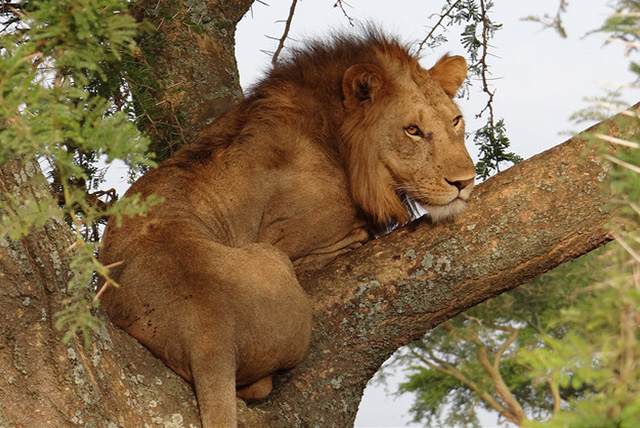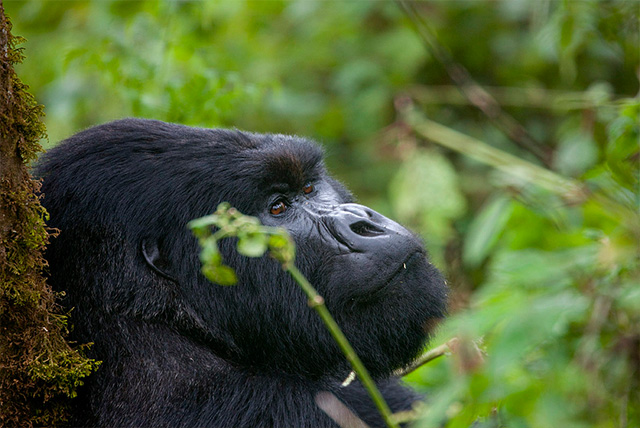Seronera Valley
Facts about Seronera Valley, Exciting excursions, Central Serengeti, Scenic airstrip flights
One of the reserve’s most popular destinations is the Seronera River Valley, located in the southeastern corner of the park. Game drives in the Seronera frequently unveil the presence of all three magnificent big cats—lions, leopards, and cheetahs—enhancing the region’s allure as Africa’s Big Cat Capital. Along the Seronera River, you will find one of the highest concentrations of big cats in Africa, making it a prime spot to spot leopards. The kopjes, or rocky outcrops, offer thrilling opportunities to spot lions in their natural habitat. The Serengeti Plains, a vast and open landscape nestled south of the Seronera River, serve as a perfect home for cheetahs. In the vibrant landscapes, one can encounter elephants, hippos, and crocodiles in the rivers, while buffalo, impala, topi, jackals, and bat-eared foxes roam through the diverse habitats of swamps, rivers, kopjes, and grasslands.
While wildlife viewing is exceptional throughout the year due to the Seronera River’s constant water supply, the prime time to visit is from April to June, when the plains come alive with migrating gazelles, zebras, and wildebeests heading north. The Seronera, with its prime location, offers an incredible opportunity to experience the Great Migration, an awe-inspiring event that unfolds over several months as it traverses the region.
The Central Serengeti: A Journey of Discovery
At the heart of this stunning national park lies the Central Serengeti, a captivating destination renowned for its diverse wildlife, abundant big cats, and iconic acacia-dotted savanna vistas. The Serengeti’s resident wildlife makes this region a must-visit at any time of year, but the most exhilarating experience occurs from April to June and from October to December, when the Great Migration herds traverse the landscape.
The Central Serengeti offers an incredible experience for witnessing the Great Migration, as the herds journey north in April and June, and then return south in October and December. Moru Kopjes, Simba Kopje, Maasai Kopje, Seronera Valley, and the Seronera River are some of the top locations in the Central Serengeti to witness the herds in their natural habitat.
For those who adore big cats, the Seronera area of the Central Serengeti awaits your exploration. This area is renowned for its thrilling pursuits featuring majestic predators such as lions, leopards, and cheetahs.
To encounter lions and cheetahs, venture into the Central Serengeti, where you’ll find numerous kopjes, or rocky granite outcrops. Some kopjes capture attention more than others; for instance, Simba Rocks, or Simba Kopje, inspired the iconic Pride Rock in Disney’s The Lion King. This impressive collection of granite boulders invites exploration beyond its cinematic connections; it serves as a prime spot for observing lions, who frequently bask in the sun atop the rocks. Moru Kopjes, nestled south of the Seronera River, boasts some of the reserve’s ancient rock art paintings and offers a chance to glimpse the reserve’s elusive black rhinos. Moreover, the Serengeti Rhino Project features a visitor center where individuals can discover the vital initiatives underway to protect this endangered species. Multi-day walking safaris in Moru Kopjes offer an exhilarating experience, as it is one of the rare locations in the park that provides this opportunity.
Travel Tips: Discovering Seronera Valley
The Seronera region boasts some of the park’s most exquisite high-end properties and presents a diverse array of lodging options, catering to everything from budget-conscious travelers to those seeking ultimate luxury. This sector of the park is brimming with excitement and exploration. For those exploring on a budget, the rustic Seronera Campsite offers a perfect spot to set up a tent, while mid-range travelers can select from an array of affordable lodges and campers. Many of these options cater to families and come equipped with modern amenities such as WiFi. The choices for luxurious camping experiences are truly exhilarating: some camps track the Great Migration herds and come equipped with plush beds, hot bucket showers, and attentive butlers; others feature beautifully designed lodges with private infinity pools and provide activities such as bush picnics, stargazing, and guided meditation sessions in the wild.
In Seronera, close to the airfield, you’ll discover the park headquarters, along with a café, a curio shop, and an information center for visitors.
In the bustling months of June and July, along with the vibrant period from October to April, the Seronera often buzzes with an abundance of sightings. If you are looking to escape the hustle and bustle during your visit in these months, think about booking a room in a quieter part of the park.
The journey to the Seronera area of the park takes you on a thrilling six-hour drive from Arusha or Mwanza. For those seeking a more straightforward approach, you can catch a flight to the Seronera airstrip and choose a lodge that welcomes fly-in visitors; they’ll arrange your airport pickup and take you on thrilling game drives in their vehicles.
Experience invigorating two- or four-hour bushwalks with knowledgeable Maasai guides at various camps and lodges. These excursions offer a chance to learn about the rich flora and fauna of the region, including the hidden gems that often go unnoticed during game drives. Seek out resorts that offer walking tours if that piques your interest.
Seronera Valley Airstrips
Among the numerous airstrips in Serengeti National Park, Seronera stands out as one of the most recognized and commonly used.
The airstrip is nestled in the quaint hamlet of Seronera, about one kilometer south of the Seronera tourist information centre, in the breathtaking northern Tanzanian Serengeti National Park. A resort, a tourist information center, two gas stations, a village bustling with stores, pubs, and a pharmacy are all conveniently nearby, along with a variety of public and private campgrounds waiting to be explored. Explore the map below for more insights about its location.
Numerous travelers to Tanzania embarking on fly-in safaris often use the Seronera Airstrip as a gateway to explore other parks in the East African Region or to reduce their travel time.
An African safari paired with convenient air travel to a national park opens up exciting opportunities for exploration and discovery. When your safari plans include a visit to the Serengeti, this airstrip serves as an ideal landing spot; your safari guide will be ready to escort you to your lodge upon your arrival.
We find ourselves soaring at an elevation of 1600 meters above sea level.
Small regional flights, reaching destinations like Dar es Salaam, along with a handful of international flights to places such as Rwanda, Uganda, and Kenya, frequently connect directly to the park or are utilized by private planes as of this writing (2017).
Moreover, the airport’s administrative offices and lobby are housed within a single building.
What’s the best way to reach that destination?
You can journey from any point in the park if your destination is the airport for your flight. The journey from Naabi Hill to Ndabaka Gates spans nearly two hours.
Seronera Valley Exploration Excursions









